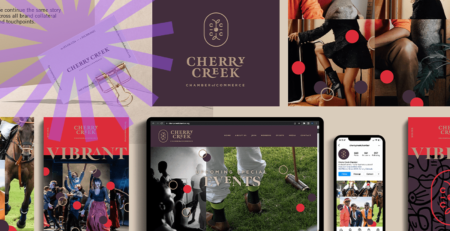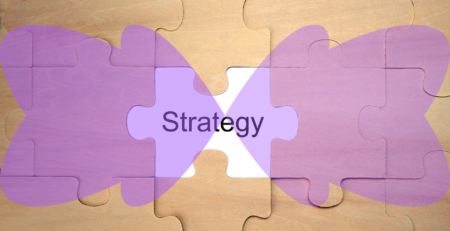Crafting a Brand Identity that Speaks to Your Target Audience
Marketing leaders face a harsh reality. Campaign metrics refuse to budge despite increased advertising spend. Presentations to leadership become exercises in justifying budgets that seem to evaporate without impact. Your brand should lead the category, yet competitors capture market share while you blend into the background noise.
This disconnect between investment and results creates mounting pressure. Teams work longer hours, agencies overpromise and underdeliver, and quick-fix digital campaigns scatter messages without strategy. The stress compounds as KPIs remain unmet, and confidence erodes with each failed initiative.
This article provides a strategic framework for building a brand identity that genuinely connects with your target audience. You’ll discover how to leverage consumer psychology, develop high-fidelity buyer personas, and create cohesive brand systems that drive measurable results. At Trace Brand Building, we’ve transformed this process into our MAGIC formula, turning confused brands into category leaders.
What is Brand Identity?
Brand identity is the complete set of tangible and intangible elements a company strategically deploys to present itself to the public. It encompasses every touchpoint from visual design and marketing messages to customer service interactions, creating the total sensory and intellectual experience a business intends for its customers.
Think of brand identity as the architect’s blueprint. While the brand itself exists as the holistic impression in customers’ minds, brand identity represents the deliberate choices about how you want to be perceived. This includes both tangible assets like logos and color palettes, and intangible elements like mission, values, and brand personality.
Building Your Brand Foundation: Core Components
Visual Identity Elements
Your visual identity serves as the most direct point of contact between your company and audience. These sensory cues must work together to build recognition and communicate meaning.
Name and Logo
Your brand name functions as the primary identifier and foundation for all marketing efforts. Strong names are memorable, easy to pronounce, and reflect your core value proposition. The logo, whether typographic or symbolic, should be simple, versatile, and serve as your unique visual signifier.
Color Psychology and Typography
Colors leverage psychological principles to evoke specific emotions and create subconscious associations. Your chosen palette acts as a powerful visual cue across all touchpoints. Typography conveys personality through the shape and style of text. Font choices should reinforce core attributes like innovation or friendliness, with consistent application serving as a unifying element.
Supporting Visual Elements
Imagery, iconography, and graphical elements create a coherent visual language extending beyond the logo. These components convey complex messages without relying on words, solidifying your aesthetic and personality.
Strategic Intangible Assets
If tangible assets form the body of your brand, intangible elements represent its soul. These strategic components provide meaning, direction, and authenticity.
Mission, Vision, and Values
These principles represent why your brand exists. Your mission defines purpose, vision outlines future aspirations, and values guide actions and decisions. Without this foundation, a brand becomes merely an aesthetic shell.
Brand Personality and Voice
Brand personality consists of human-like characteristics that make your company relatable. Whether sincere, sophisticated, or exciting, this framework guides how your brand should look, sound, and behave across interactions. Your tone of voice ensures consistent expression of this personality through all communication.
Brand Story
A compelling narrative defines your origins, purpose, and journey. Unlike simple history, powerful brand stories involve consumers as characters, addressing their needs and making them integral to your existence.
Understanding Your Target Audience with Precision
Moving Beyond Demographics
Effective brand identity requires precision targeting. Your target audience represents the specific segment most likely to be interested in and benefit from your product or message. This differs from the broader target market; it’s a focused subset defined by shared characteristics.
Start by analyzing your existing customer base to uncover patterns in age, location, and interests. Pair this with a fundamental question: What problem do your goods or services solve? This value proposition helps deduce who benefits most from your solution.
Three Layers of Audience Analysis
Demographic Analysis
This foundational layer provides the “who” through objective data points like age, gender, income, location, occupation, and education. Surprisingly, less than half of marketers know their audience’s demographic information, indicating a significant knowledge gap.
Psychographic Analysis
This critical layer uncovers the “why” behind consumer actions. Psychographics explore subjective traits including lifestyle, values, beliefs, interests, and personality. Understanding whether your audience values sustainability or seeks adventure provides insights necessary for emotional alignment.
Behavioral Analysis
This focuses on the “how” through observable actions and patterns. Data includes purchase history, website interactions, email engagement, and decision-making processes. This reveals actual customer preferences and engagement levels.
Mapping Consumer Motivations
Strategic value emerges when data synthesis maps the consumer’s internal world:
Core Motivations: Consumers search for benefits transcending product features, including convenience, economic value, or social status. Identifying dominant motivations helps frame your value proposition effectively.
Pain Points: Identify specific problems and frustrations your audience experiences. Brands articulating these pain points demonstrate empathy and position products as relevant solutions.
Goals and Objectives: Understand what your audience strives to achieve personally or professionally. Aligning with these aspirations positions your brand as a partner in their journey.
How Do You Create Buyer Personas?
Buyer personas are semi-fictional representations of ideal customers, synthesized from quantitative and qualitative research. These humanized archetypes bring your target audience to life for your entire organization.
The Development Process
- Conduct Comprehensive Research: Combine quantitative data from analytics platforms with qualitative insights from customer interviews, surveys, and feedback from sales teams.
- Analyze and Synthesize: Identify patterns and commonalities to segment your audience into distinct groups.
- Build the Profile: Give each persona a name and photo. Detail demographics, psychographics, goals, challenges, and motivations. Include real customer quotes to capture their voice.
- Contextualize for Use: Add actionable insights, including preferred communication channels, content preferences, and appropriate brand voice.
These personas act as safeguards against designing for yourself rather than customers. When decisions arise, teams can ask: “How would our primary persona react to this?”
The Psychology Behind Brand Connection
Emotional Triggers in Decision-Making
Research indicates 95% of purchasing decisions are driven by subconscious factors, not rational analysis. Effective branding creates psychological experiences, fostering emotional connections. Brands evoking positive emotions like joy, trust, or belonging foster stronger loyalty and retention.
Well-crafted identities leverage cognitive biases strategically:
The Halo Effect: Positive overall impressions influence perception of individual attributes. Clean, professional identities may signal higher-quality products before direct experience.
Confirmation Bias: People favor information that confirms existing beliefs. Once positive perceptions are established, consumers interpret future interactions positively.
The Bandwagon Effect: Individuals adopt behaviors because others do. Identities communicating popularity gain perceived reliability through social proof.
Strategic Color Application
Color influences mood and triggers associations in milliseconds. Strategic palette selection isn’t an aesthetic choice but a critical decision rooted in desired emotional responses.
Key color associations in branding:
- Red: Passion, energy, urgency. Effective for attention and impulse buying (Coca-Cola, McDonald’s)
- Blue: Trust, stability, professionalism. Dominant in finance and technology (IBM, PayPal)
- Green: Nature, health, harmony. Used by wellness and sustainability brands (Whole Foods, Starbucks)
- Yellow: Optimism, warmth, happiness. Creates friendly approachability (IKEA)
- Black: Luxury, sophistication, power. High-end brands create exclusivity (Prada, Chanel)
Typography’s Silent Communication
Font choices communicate vast information about personality and values before consumers process word meanings. Different typefaces carry distinct psychological weights:
Serif Fonts: Associated with tradition, authority, and reliability. Ideal for institutions conveying trustworthiness.
Sans-serif Fonts: Clean, modern appearance associated with innovation and approachability. Dominant among technology companies and startups.
Script Fonts: Evoke elegance and creativity. Used by luxury brands and artisanal companies conveying craftsmanship.
Implementing Your Brand Identity Strategy
At Trace Brand Building, we’ve developed a systematic four-phase process ensuring every element aligns with company values and audience psychology.
Phase I: Foundational Research
This critical phase forms the evidence-based foundation for all decisions.
Internal Analysis: Articulate your mission, vision, and values. Interview stakeholders to capture holistic brand perception and business goals. Answer: “Why does this business exist beyond profit?”
Competitor Analysis: Evaluate competitors’ identities, messaging, and positioning. Identify industry conventions and white space opportunities for differentiation.
Audience Analysis: Execute multi-dimensional research, developing high-fidelity personas representing ideal customers.
Phase II: Strategy Formulation
Transform insights into actionable strategic briefs serving as creative north stars.
Brand Positioning: Craft statements articulating what you stand for, who you serve, and differentiation. Define your unique market position.
Personality and Voice: Define distinct personality traits based on values and audience psychographics. Create tone guidelines for consistent communication.
Core Messaging: Formulate key messages and compelling brand stories aligning with audience values.
Phase III: Design Execution
Strategy becomes tangible through purposeful creative development.
Mood Boarding: Gather visual inspiration reflecting brand personality.
Core Elements: Design logo concepts, define color palettes, select typography. Apply psychological principles ensuring intended emotional responses.
Application Testing: Apply concepts to real-world mockups, including websites, packaging, and advertisements.
Phase IV: Validation and Refinement
Test concepts with stakeholders and target audiences before launch.
Internal Feedback: Present concepts explaining strategic rationale linking design to research findings.
Audience Testing: Expose target audience samples to concepts. Gather feedback on authenticity and emotional response.
Revision: Refine based on feedback, finalize assets, and create comprehensive guidelines.
Maintaining Brand Consistency Across Channels
The Consistency Imperative
Consistency builds trust through pattern recognition. Uniform visual identity, messaging, and voice across touchpoints reinforces reliability. Conversely, inconsistency erodes equity quickly. Every interaction represents your brand.
Developing Brand Guidelines
Comprehensive guidelines codify identity and provide practical application instructions.
Visual Guidelines: Detail logo usage, color specifications, typography hierarchy, and approved imagery styles.
Verbal Guidelines: Codify voice and tone with concrete examples. Provide platform-specific adaptations, maintaining core voice.
Make guidelines accessible to all employees and external partners.
Digital Platform Adaptation
Digital media transforms branding from broadcast to dialogue. Brands must perform identity through authentic engagement.
Visual Optimization: Create responsive logos, select vibrant digital colors, and choose readable typography.
Voice Tailoring: Adapt tone to platform norms while maintaining personality. Professional on LinkedIn, witty on TikTok, visual on Instagram.
Social media showcases values and personality in real-time through direct engagement.
Common Brand Identity Mistakes to Avoid
Pitfall Recognition
Awareness prevents common traps undermining identity:
Inconsistency: Most common failure from unclear guidelines or poor communication. Creates fragmented experiences, eroding trust.
Ignoring Audiences: Designing for internal preferences rather than customer needs creates alienating identities.
Trend Chasing: Basing core identity on fleeting trends causes quick obsolescence.
Aesthetic Overemphasis: Beautiful brands lacking a strategic foundation are hollow facades unable to build connections.
Forgetting Internal Branding: Employees deliver identity. Without understanding and empowerment, customer experience misaligns with promises.
Learning from Brand Success and Failure
Success Stories
Apple: Masters strategic alignment through innovation and sophisticated simplicity. Minimalist aesthetics and premium positioning speak directly to audiences valuing design and status.
Nike: Built on achievement and self-improvement desires. “Just Do It” and athlete partnerships create powerful performance associations.
Old Spice: Radical repositioning from outdated to culturally relevant through humorous, self-aware campaigns. Achieved 125% sales increase by aligning with younger audiences.
Cautionary Examples
Tropicana (2009): Replaced iconic packaging with a generic design. Sales plummeted 20% in two months, losing $30 million. Underestimated emotional connection to existing identity.
Gap (2010): Abruptly replaced classic logo with generic design. Public backlash forced retraction after six days. Failed to respect consumer loyalty and nostalgia.
Pepsi (2017): Tone-deaf advertising trivialized social justice movements. Demonstrated a severe disconnect between the intended unity message and the audience’s values.
Measuring Brand Identity Success
Key Performance Indicators
Track identity effectiveness through multiple metrics:
Brand Recognition: Measure unaided and aided recall. Strong identities increase spontaneous brand mentions.
Engagement Metrics: Monitor social media interactions, website dwell time, and content sharing rates.
Customer Loyalty: Track repeat purchase rates, customer lifetime value, and Net Promoter Scores.
Market Position: Analyze market share changes and competitive positioning shifts.
Continuous Optimization
Brand identity requires ongoing refinement. Regular audience research ensures personas remain accurate. Monitor social conversations for perception shifts. Test new touchpoints before full implementation.
The Path Forward with Strategic Brand Building
Creating resonant brand identity demands disciplined integration of research, psychology, design, and organizational alignment. Success requires treating identity as a holistic system, not isolated elements.
The perception gap between intended identity and actual image measures authenticity. Closing this gap requires consistent delivery on brand promises across every touchpoint. Deep audience understanding forms the foundation, while psychological principles provide connection tools. Consistency guards brand equity in fractured media landscapes.
At Trace Brand Building, we transform this complex process through our MAGIC formula. We uncover authentic narratives through strategic positioning, craft complete identity systems bringing positioning to life, and build integrated campaigns, turning brands into obvious choices. Our clients shift from defending existence to celebrating impact. Marketing teams gain strategic thinking space. Budgets stretch further, serving larger strategies.
Conclusion
Building a brand identity that genuinely speaks to your target audience requires more than aesthetic choices. It demands deep psychological understanding, strategic alignment, and consistent execution across every customer interaction. The brands that succeed are those that close the gap between promise and delivery, creating authentic connections with their audiences.
The journey from confused messaging to category leadership begins with understanding that your brand exists in your customers’ minds, shaped by every interaction they have with your business. By applying the frameworks and principles outlined here, you can craft an identity that not only attracts attention but also commands your category.
Ready to transform your brand from overlooked to unmistakable? Book the MAGIC Audit or schedule a 20-minute eligibility check. We deliver a verified 10% sales lift within 90 days on the same ad budget, with our last five builds achieving a median 34% lift. Ready to go from unknown to iconic?











